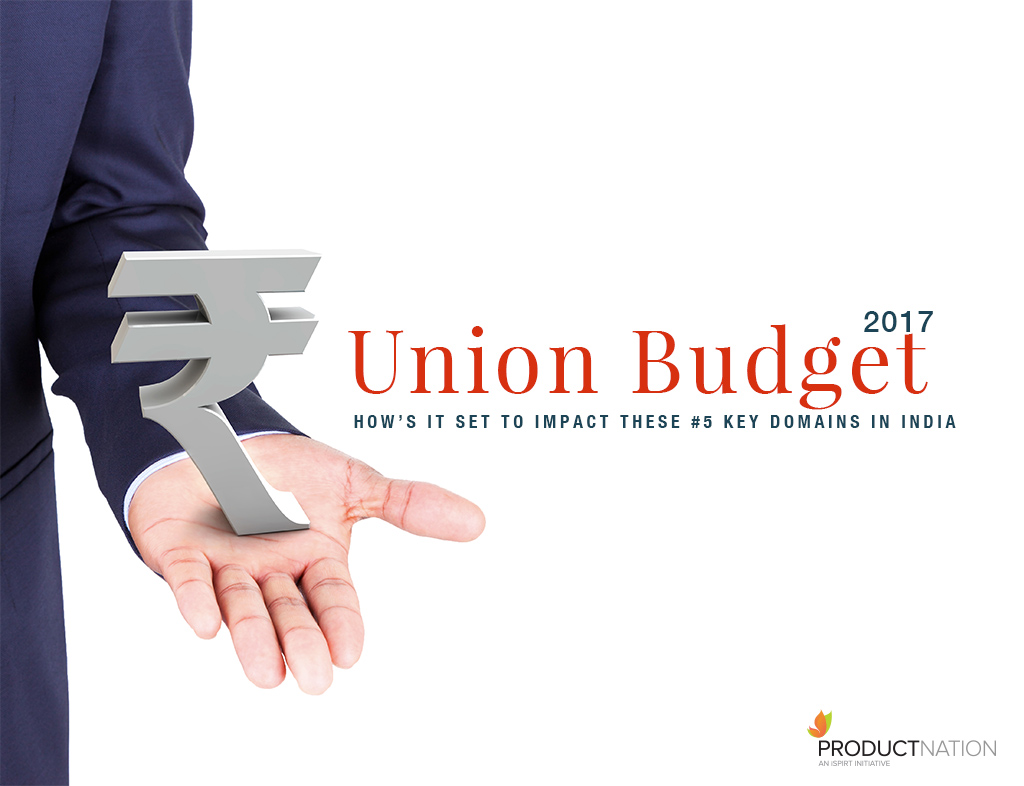Alright, before I take the plunge into revealing what I expect from the impending budget, let’s take a quick glance at numbers on how the Government has fared since its inception:
- Modi’s flagship Make in India initiative launched to create employment & self-employment saw huge traction with India’s gross FDI flow jumping by 27% a.k.a $45 billion in 2015-16, an all-time high.
- Jan Dhan Yojana witnessed 11.5 crore Indians opening bank accounts, that’s getting 99.74% households bankable.
- Under the Swachch Bharat initiative, a total of 31.83 lakh toilets have been built between April 2014 and January 2015, 25.4% of the target. World bank has also invested $1 Bn in PM’s pet project.
In Feb 2016 alone, under the Skill India initiative, 3,222 training centres were opened, more than 55 lakh people trained and 50% placed. - Nasscom had launched the “10,000 Startups programme” in 2013 in which 700 tech-driven startups were set up. After the launch of the Startup India, Stand up India initiative by 2015, the number had increased by 70% to around 1200. It is expected, there will be a 75% increase in the number to 2100 by 2020.
All said and done, looks like NDA government has fared decently in their term thus far and as the run up to the elections in 2019 rapidly advances, this year’s budget is going to be epic!
For starters this is going to be the first time that a Union Budget will be passed in February. The reason is concrete! When a budget is declared in March, it gets passed by both the houses only by mid-May thus delaying the entire process. By having a budget in Feb, the govt is making sure that it’s passed and ready to be implemented before the start of the new financial calendar.
Secondly, thanks to the demonetization move, digital commerce has been given a massive push. Furthermore, a year after PM Modi launched the visionary ‘Startup India Campaign’, there’s a lot of heat building up in the startup community which is expecting a series of initiatives that will be in their favor. 2017 is surely poised to be an exciting year.
1. For Startups
Widening of tax-free regime from the current 3 years to 5 years along with easier procedural clearances. Considering startups take a while to register profits, this move will promote entrepreneurship and innovation.
The government may also make regulations on FDI and ease institutional investment while also reducing governmental charges and taxes on it. In the long run, this will help in solving the capital need for startups since, majority of funding for startups come from venture capital funds that rely heavily on foreign investments.
With the Start-up initiative at the fore, we can see a new set of concessions on employee stock options, unlisted securities and convertible instruments.
2. Womenpreneurs: Easy access to funds
When it comes to women entrepreneurs, though, the government has been supportive in promoting women entrepreneurship, what most of us need is an easy access to funds. Additionally, since the implementation of GST will be on table for this budget, the government will come up with the new rationalized tax structure. We, women entrepreneurs, should definitely be a part of consideration in corporate taxes and loans.
3. Definitive SOPs, tax rebates, indirect taxes
The sole goal of demonetization was to put India on the path towards a cashless economy. Keeping this in mind, the Budget should include definitive SOPs and tax rebates to encourage and boost e-payments. Moreover, to achieve the goal of financial inclusion, the government should also rationalize indirect taxes and charges levied with respect to digital payment transactions and further incentivize companies operating within this space. To adapt to the need of time, government should also rationalize income tax provisions including provisions related to employee tax benefits such that payments/documents in the digital medium are treated at par with physical instruments.
4. Corporate taxes
I’m even looking at the reduction of corporate tax rate from 35 to 25% percent for startups and companies in the digital payments ecosystem. Transactions worth trillions are done in India yearly. Of these, hardly 10% are on digital platforms. The government must take more concrete steps to make digital payments ubiquitous. This budget should announce measures to upgrade digital infrastructure across the country. Steps should be taken to promote digital literacy and connect cities, towns and villages with high-speed internet networks.
5. Digital payment
While, the government has pushed for digitalization, post the demonetization move, I believe a lot still needs to be done on promoting digital payments. For instance, the government needs to reconcile and even reduce all indirect taxes on digital payments to nil. The government needs to work on a concerted effort to cut the payment gateway and bank charges on online transactions. Only then would people be truly incentivized to pay online.
The sector wants more tax concessions for customers and shopkeepers who go digital. The incentives can come in the form of income tax, service tax etc. What the budget can offer is extend the nuggets of sops on e-payments through UPI, add a dash of income tax rebates on e-payments and facilitate retailer-rebates on grocery bills, LPG payments, bus or metro card recharges and so on. The government has already introduced waiver of service tax on debit and credit card transactions of up to Rs 2,000.
In conclusion…
2016 had witnessed several markdowns in India’s ecosystem and I’m definitely looking forward to the budget and what it has in store.
Guest Post by Dr. Som Singh, Entrepreneur, Investor and founder of Unspun Consulting. This post was written for the Entrepreneur India magazine.


